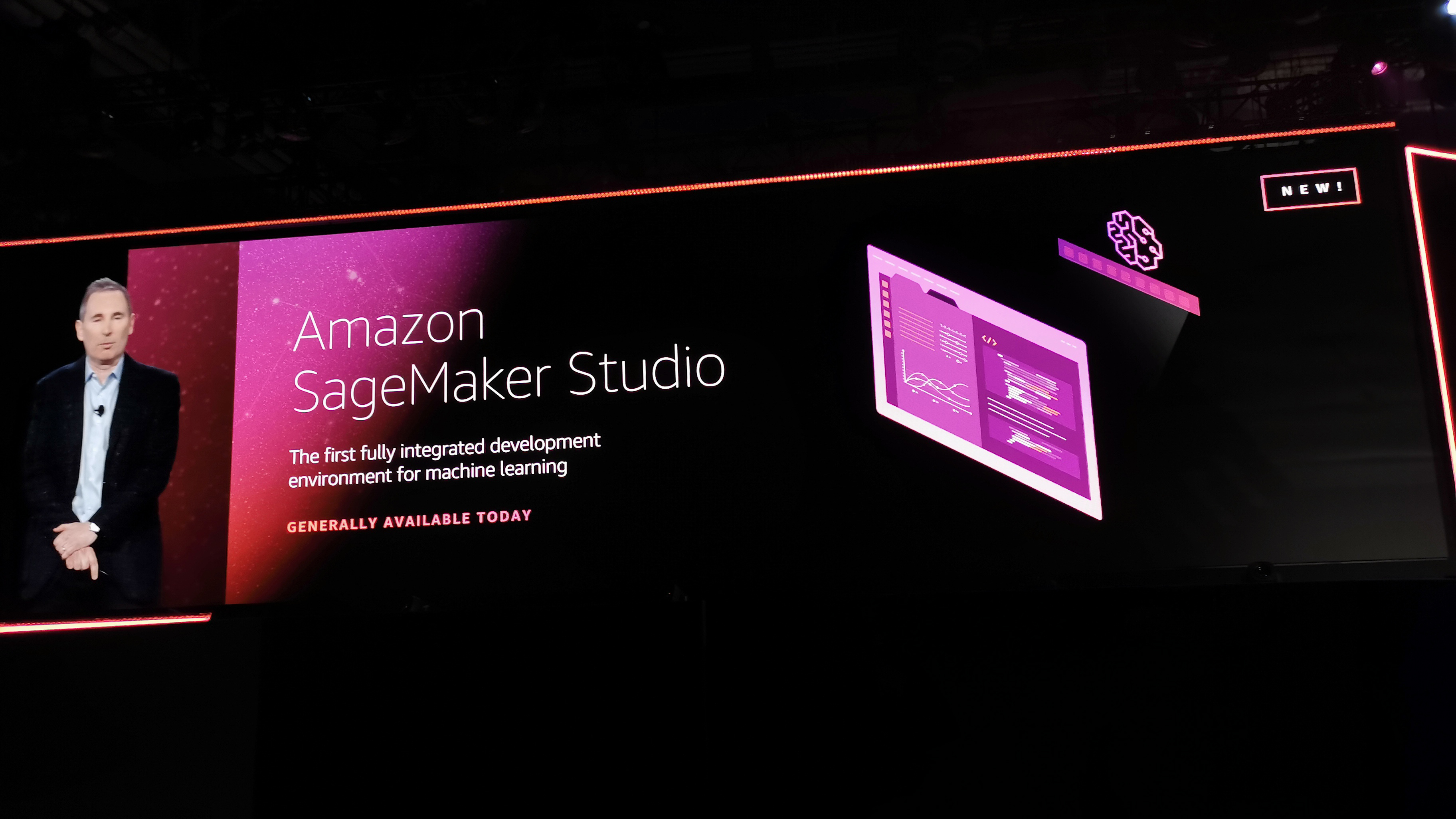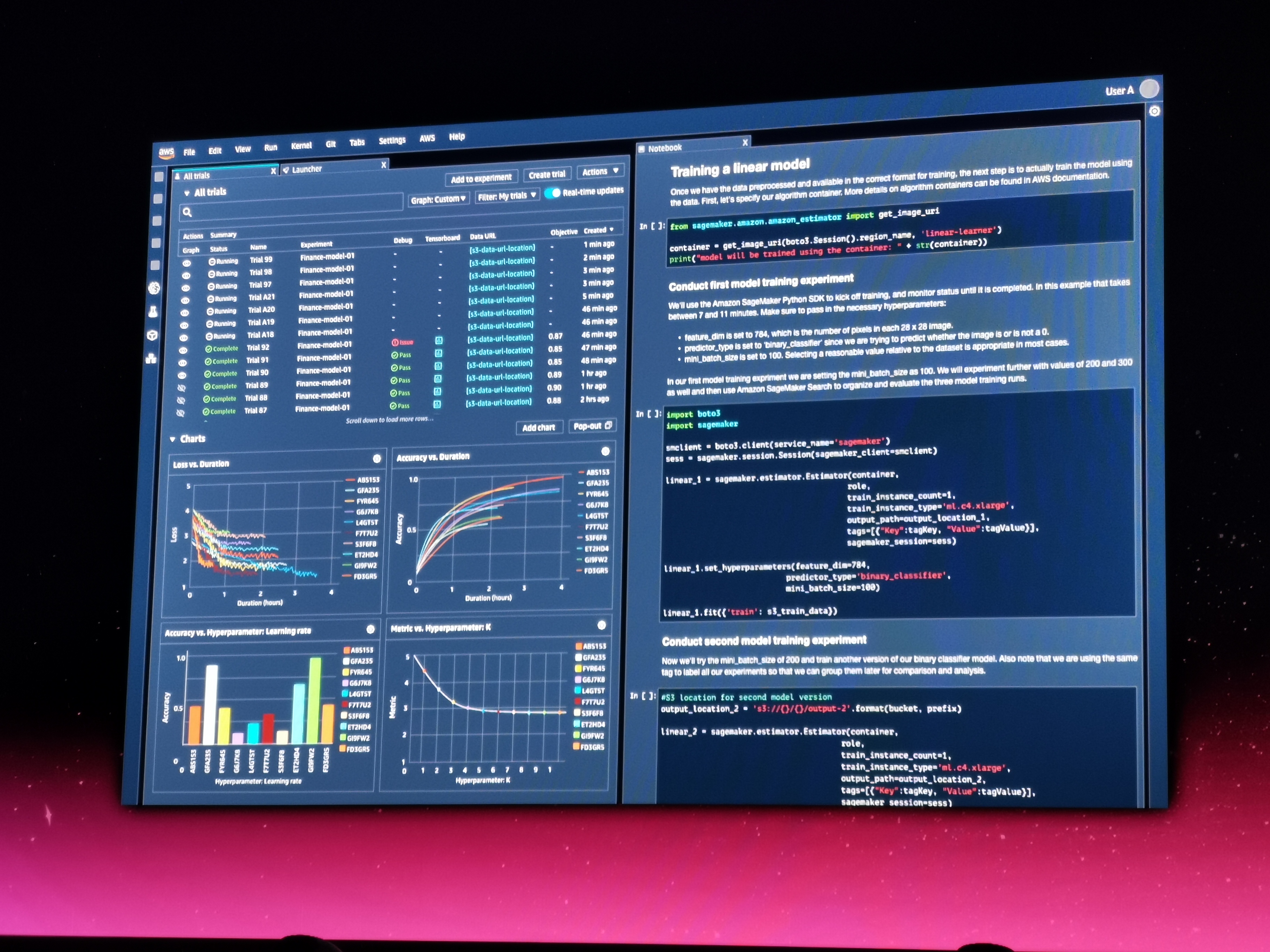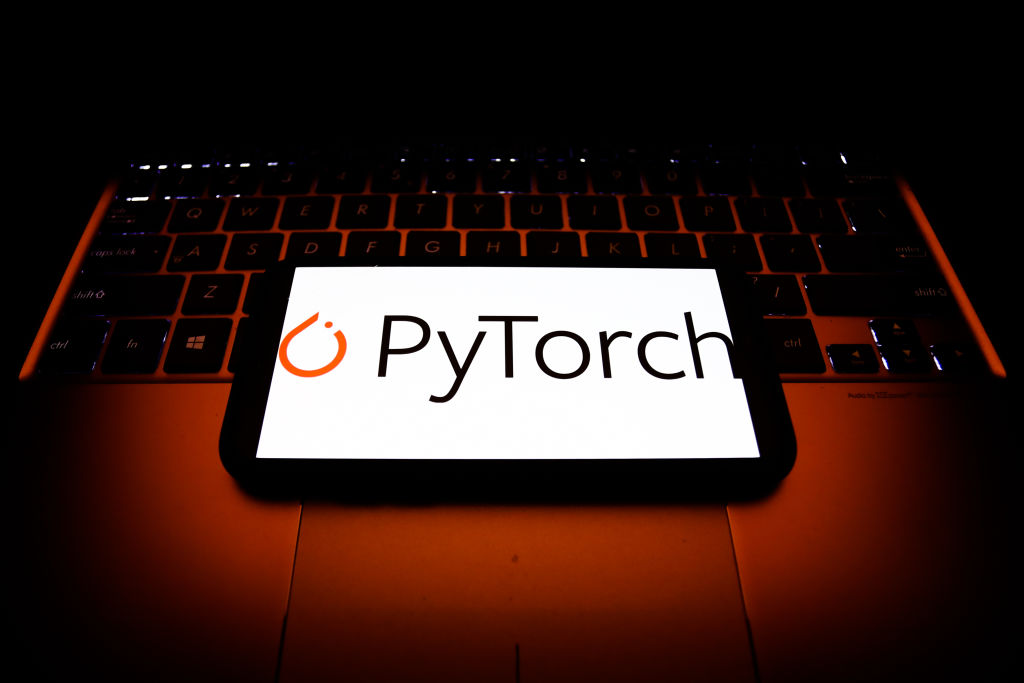AWS ramps up SageMaker tools at Re:Invent
Cloud giant loads more capabilities into its machine learning hub with AWS SageMaker Studio


CEO Andy Jassy announced a barrage of new machine learning capabilities for AWS SageMaker during his re:Invent keynote on Tuesday.
SageMaker is Amazon's big machine learning hub that aims to remove most of the heavy lifting for developers and let them use ML more expansively. Launched in 2017, there have been numerous features and capabilities introduced over the years, with more than 50 added to it in 2019 alone.
Of the SageMaker announcements made at the company's annual conference in Las Vegas, the biggest was AWS SageMaker Studio, an IDE that allows developers and data scientists to build, code, develop, train and tune machine learning workflows all in a single interface. Within it information can be viewed, stored, collected and used to collaborate with others through the studio.

In addition to SageMaker Studio, the company announced a further five new capabilities: Notebooks, Experiment Management, Autopilot, Debugger and Model Monitor.
The first of these is described as a 'one-click' notebook with elastic compute.
"In the past, Notebooks is frequently where data scientists would work and it was associated with a single EC2 instance," explained Larry Pizette, the global head of ML solutions Lab. "If a developer or data scientist wanted to switch capabilities, so they wanted more compute capacity, for instance, they had to shut that down and instantiate a whole new notebook.
"This can now be done dynamically, in just seconds, so they can get more compute or GPU capability for doing training or inference, so its a huge improvement over what was done before."
Sign up today and you will receive a free copy of our Future Focus 2025 report - the leading guidance on AI, cybersecurity and other IT challenges as per 700+ senior executives
All of the updates to SageMaker have a specific purpose to simplify the machine learning workflows, like Experiment Management, which enables developers to visualise and compare ML model iterations, training parameters, and outcomes.
Autopilot lets developers submit simple data in CSV files and have ML models automatically generated. SageMaker Debugger provides real-time monitoring for ML models to improve predictive accuracy, reduce training times.
And finally, Amazon SageMaker Model Monitor detects concept drift to discover when the performance of a model running in production begins to deviate from the original trained model.
"We recognised that models get used over time and there can be changes to the underlying assumptions that the models were built with - such as housing prices which inflate," said Pizette. "If interest rates change it will affect the prediction of whether a person will by a home or not."
"When the model is initially built to keep statistics, it will notice what we call 'Concept Drift' if that concept drift is happening, and the model gets out of sync with the current conditions, it will identify where that's happening and provide the developer or data scientist with the information to help them retrain and retool that model."
The company also announced a ML service to help write code - AWS Code Guru. This is an automated tool that's been trained on several decades of code reviews at Amazon, according to the company. If it discovers an issue, it will add human-readable comments to pull requests that identify lines of code with a specific issue and recommended remediation, including example code and links to relevant documentation.
Bobby Hellard is ITPro's Reviews Editor and has worked on CloudPro and ChannelPro since 2018. In his time at ITPro, Bobby has covered stories for all the major technology companies, such as Apple, Microsoft, Amazon and Facebook, and regularly attends industry-leading events such as AWS Re:Invent and Google Cloud Next.
Bobby mainly covers hardware reviews, but you will also recognize him as the face of many of our video reviews of laptops and smartphones.
-
 TPUs: Google's home advantage
TPUs: Google's home advantageITPro Podcast How does TPU v7 stack up against Nvidia's latest chips – and can Google scale AI using only its own supply?
-
 Microsoft Excel is still alive and kicking at 40
Microsoft Excel is still alive and kicking at 40News A recent survey found Gen Z and Millennial finance professionals have a strong “emotional attachment” to Microsoft Excel
-
 Channel Focus: All you need to know about Snowflake's partner program
Channel Focus: All you need to know about Snowflake's partner programSnowflake wants partners to help with its mission to make 'the AI era' easy, efficient, and trusted...
-
 Inside IBM’s plans to bring generative AI to Wimbledon
Inside IBM’s plans to bring generative AI to WimbledonNews Match-goers at Wimbledon this year will be armed with a range of generative AI features to enhance their experience
-
 Gartner: Data analytics teams failing to deliver benefits despite rising budgets
Gartner: Data analytics teams failing to deliver benefits despite rising budgetsNews Human-related challenges, such as lack of talent, were highlighted as key impediments to data strategy success
-
 Machine learning vs data science: What’s the difference?
Machine learning vs data science: What’s the difference?In-depth Both machine learning and data science are fields that extract insights from data, but the methods vary significantly
-
 Solve global challenges with machine learning
Solve global challenges with machine learningWhitepaper Tackling our world's hardest problems with ML
-
 Elastic expands cloud collaboration with AWS
Elastic expands cloud collaboration with AWSNews Partnership aims to ease migration to Elastic Cloud on AWS, as well as simplify onboarding and drive go-to-market initiatives
-
 Re:Invent 2021: AWS offers three new capabilities for enterprise databases
Re:Invent 2021: AWS offers three new capabilities for enterprise databasesNews New features enable scalable, cost-effective data management
-
 Meta picks AWS to help expand its AI services
Meta picks AWS to help expand its AI servicesNews Two firms will work to improve the open source PyTorch machine learning library
